Maritime Paintings and Decorative Arts
January 24th, 2014
|
Emma Heather by William Pierce Stubbs (1842-1909) depicts the three-masted schooner Emma Heather, built in 1871 in Milton, Delaware, and sunk in a gale off the Delaware Breakwater in 1893. Stubbs’s work and the work of so many other artists flattered and idealized its subject. She was a coal carrier! The painting was designed to please its patron. In an April 26, 1941, article for his column “Schooner Days” in Toronto’s Evening Telegram, C. H. J. Snider described the coal carriers as “patched, coal dusty, [with] misfitting sails, a hogged sheer, blistered paint, and nothing but a ragged fly aloft...,” but a ship’s picture, on the other hand, “would replace these by smooth new canvas, rounding into seemly shadows, sweeping sheetlines, shining paint, and gay bunting [which] would flame at each masthead.” In a word, the artist, in this case Stubbs, would “take the hard look off her.” This one sold for $4000.
Yachts Coming Downwind by George Nemethy (b. 1952), oil on panel, 10¼" x 7", brought $3500. It’s an unusual, dynamic presentation, and the colors have the distinctive Nemethy glow. Sanford Smith, a show promoter and one-time marine art dealer, was intrigued by the frequent appearance of similar, unsigned paintings. By whom? He tracked Nemethy down, visited the elusive painter, and offered to sell his paintings if properly signed. Nemethy agreed and spawned a dedicated coterie of Nemethy collectors. Smith, incidentally, was intrigued by the artist’s professional studio, in which there was an open book (J. & J. Bard Picture Painters) covered with paint.
Henry B. Smith was a Great Lakes ore carrier. How Jacobsen came by this assignment is unknown. The Great Lakes venue seems rare and possibly unique. There were a number of Great Lakes artists who could have handled the assignment. To an East Coast viewer its appearance in a painting is accurate but astonishing. The owner was smitten, however, and compelled to have her portrait. It’s 12" x 42" on masonite, signed “Antonio Jacobsen 1907/ 31 Palisade Av, W. Hoboken, NJ,” and brought $7500.
Packet Fanchon of the Black Star Line. One of the distinguishing characteristics of the work of Liverpool’s artists is their respect for setting. This 24" x 36" portrait of Fanchon is a remarkable example. She has just arrived, is reducing sail, although not yet lowering the anchor, and a sloop rushes off, perhaps having picked up an important package. And her importance is highlighted by an extensive and accurate background of the Liverpool port. How easy it would have been for the artist to simply display her against a few hills and green trees. It sold for $100,000.
James Foster Jr. of the Black Ball Line was painted by Samuel Walters as a three-year-old, shown in an angry sea and leaden skies, leaving Liverpool nonetheless because of the demands of business. Her reputation followed her until she left the Black Ball service in 1878. Remarkably, her reputation lived on. It was Antonio Jacobsen’s good fortune that he painted five versions between 1907 and 1918. This one was $18,750 this time.
Clipper ship Electric Spark painted by John Hughes (English, 1806-1880). An Englishman painted the portrait of this American-built clipper out of Medford, Massachusetts, in 1857. We can’t be sure why she was named Electric Spark. Lightning? She served her owners well but never lived up to implications suggested by her name. She spent most of her career in the Pacific among the Chincha Islands in the guano trade. The painting sold for $20,000. |
Bonhams, New York City
Photos courtesy Bonhams
Ship portraiture in the 19th century was a fair wind phenomenon. A mariner could buy a quality painting of his ship most anywhere—Penobscot Bay, Boston, New York, Baltimore, New Orleans, Liverpool, Stockholm, Bremen, Le Havre, Marseille, Naples, Smyrna, Cape Town, Rangoon, Sydney, Macao, San Francisco, and elsewhere. In a January 1923 article in The Magazine Antiques, “Paintings of the Old ‘Wind-Jammers,’” Fred J. Peters remembered that “It was not uncommon…to observe two or three artists at a time sketching a vessel riding at anchor or unloading at a wharf.”
The two ports where “sketching a vessel” was well established were Liverpool and New York and by the likes of Samuel Walters (1811-1882), James Buttersworth (1817-1894), and Antonio Jacobsen (1850-1921). Bonhams offered some major works from these ports and artists on January 24.
The following lists in two categories of 16 paintings from the collection of Alfred I. “Fritz” Gold were highlights among the paintings offered. According to the New York Times obituary on January 18, 2009, to those who knew him, Gold left memories of a thousand unpublished insights. The quality of the examples from his estate attests to his connoisseurship. All prices include buyer’s premium.
Liverpool Artists
Packet James Foster Jr. of the Black Ball Line, signed “Samuel Walters, 1857,” $18,750.
Andrew Foster of the St. George Line, unsigned but attributed to Samuel Walters, $23,750.
Clipper ship Electric Spark, signed indistinctly “Hughes, Painter” for John Hughes (1806-1880), $20,000.
Packet Memphis of the Louisiana Line, signed “S. Walters 1842,” $52,500.
Packet Katahdin of the Merchant’s Line, by Joseph Heard (British, 1799-1859), $70,000.
Packet Fanchon of the Black Star Line, signed “S. Walters,” circa 1848, $100,000.
Packet Cromwell of the White Star Line, initialed “JH” for John Hughes, $40,000.
American bark Jabez Snow being towed outward bound, by Samuel Walters, $27,500.
Packet Shakespeare of the Dramatic Line, signed “S. Walters 1843,” $35,000.
Ship Kirkland, inscribed “Kirkland Captain William Philips,” indistinctly signed “Carl Jus….” (Carl Justus Harmen Fedeler [German, 1799-1858]), $11,875.
Packet Guy Mannering of the Black Ball Line, by John Hughes, $56,250.
Packet Vanguard of the Merchant’s Line, signed “S. Walters, 1850,” $25,000.
Packet Devonshire of the Black X Line, signed “S. Walters, 1850,” no sale.
James Buttersworth
British ships (frigates) in a squall, one ship of the Red and Blue Line, by James Buttersworth, unsold.
New York Yacht Club schooners racing off Sandy Hook, signed “J. E. Buttersworth,” $68,750.
New York Yacht Club schooners racing in the Narrows, Fort Wadsworth in the distance, signed “J. E. Buttersworth,” $106,250.
That completes the Fritz Gold collection list, but from another source (cataloged as “privately owned”) came the clipper Flying Cloud in a gale wind off Cape Horn, circa 1854, signed “J. E. Buttersworth.” It sold for $185,000. This is one of the 16 works by Buttersworth that can be dated between 1852 and 1855, because they were all reproduced lithographically by Nathaniel Currier in those years. All, remarkably, were of the quality of Flying Cloud.
These on the next list came from various sources and are by the ever-popular Antonio Jacobsen (1850-1921) and from his exhaustive inventory.
Sorrento, signed and dated “A. Jacobsen/ 257 8th Ave., 1884,” $10,625.
Manhanset, signed and dated “A. Jacobsen/ 1893,” $12,500.
Massachusetts, signed and dated “A. Jacobsen [18]93/ 705 Palisade Av West Hoboken NJ,” $13,750.
City of Richmond, signed and dated “A. Jacobsen/ 257 8th Av, 1879,” $28,750.
Majestic of the White Star Line, signed and dated “A. Jacobsen/ 1890/ 705 Palisade Av. West Hoboken, N…,” $25,000.
Battle of Santiago de Cuba, U.S.S. Oregon and U.S.S. Brooklyn, signed and dated, 1899, $15,000.
S.S. Mexico departing Havana harbor, signed “Antonio Jacobsen/ 1904,” $20,000.
Henry B. Smith, signed and dated 1907, $7500.
Philadelphia, circa 1907, unsigned, $12,500.
Early Jacobsens are always good, as evidenced by the result of the Majestic. Early Jacobsens with a city name are better, as seen with City of Richmond. Later Jacobsens did not always earn as much.
Among the also-rans were Napoleon prisoner-of-war models. For example, a miniature cased one brought $9375, and two others brought $12,500 and $35,000. Three paintings of yachts by Antonio De Simone (1851-1907) sold for $1250, $2500, and $3500. Montague Dawson (British, 1890-1973) paintings fetched $37,500, $93,750, $68,750, and $81,250, nary an expected $100,000 or above. The crest may be off that wave.
Unsold was a painting by Dominic Serres (French-English, 1722-1793), a view of the French fortress at Louisbourg, Cape Breton Island, and the entrance to the St. Lawrence River. The presale estimates of $50,000/70,000 were not to be reached.
Finally, what I consider a very fine pair depicting a rarely painted subject from the British viewpoint—the first America’s Cup race. Perhaps it’s rare because the British may not have wished to be reminded and the Americans came along to Britain without a media team. The first of the pair is titled Passing Ryde Pier and shows the schooner Aurora leading America, the rest of the fleet far behind. The second painting, “America” Leading “Aurora” off Osborne, shows America leading Aurora with the followers unseen. By relatively unknown Henry Sargeant (British, 1798-1868), each is an 11" x 15" oil on board. They brought $37,500.
For more information, see the Bonhams Web site (www.bonhams.com).
|
|
Originally published in the May 2014 issue of Maine Antique Digest. © 2014 Maine Antique Digest
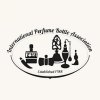









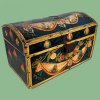

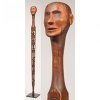
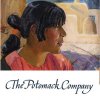
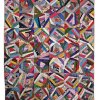
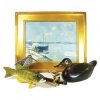
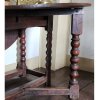


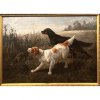


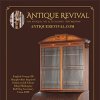


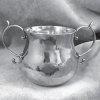












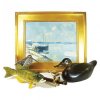


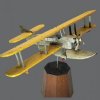






 This 22" x 43½" painting by Robert Salmon (Scots-American, 1775-c. 1845), Shipping off Birkenhead, initialed and dated “R S 1810,” was consigned by a private owner who had bought it at Sotheby’s sale of the Diane and Norman Bernstein collection on January 22, 2006, for $284,800. It sold here as the “Best of Show” (top lot) for $221,000.
This 22" x 43½" painting by Robert Salmon (Scots-American, 1775-c. 1845), Shipping off Birkenhead, initialed and dated “R S 1810,” was consigned by a private owner who had bought it at Sotheby’s sale of the Diane and Norman Bernstein collection on January 22, 2006, for $284,800. It sold here as the “Best of Show” (top lot) for $221,000.




